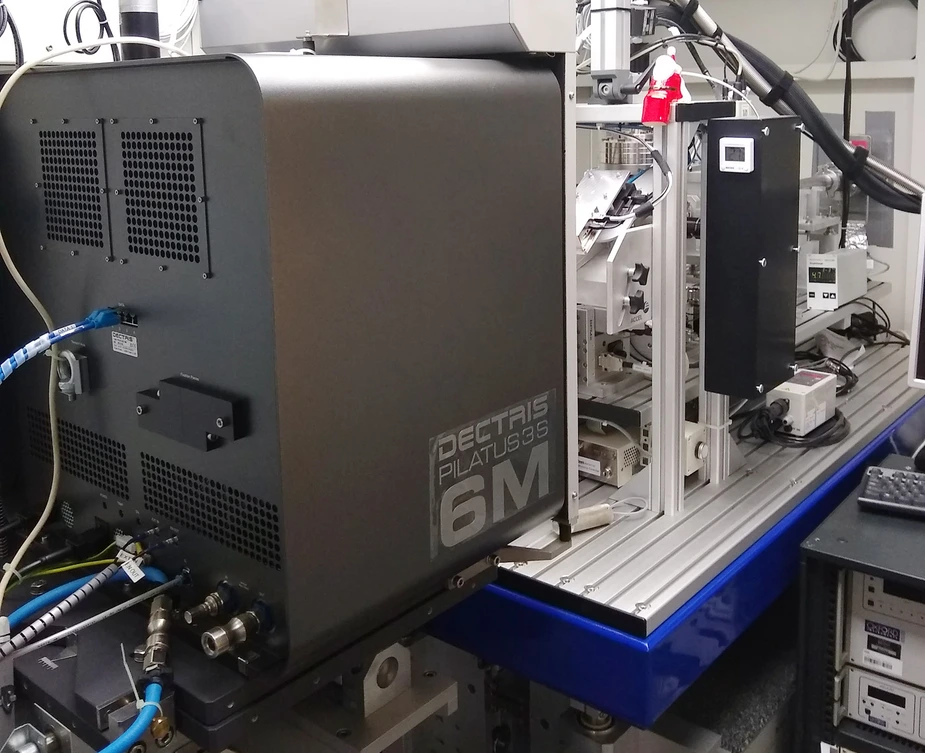New detector accelerates protein crystallography
MX Beamline at BESSY II works about 2 to 3 times faster than before
In February a new detector was installed at one of the three MX beamlines at HZB. Compared to the old detector the new one is better, faster and more sensitive. It allows to acquire complete data sets of complex proteins within a very short time.
Proteins consist of thousands of building blocks that can form complex architectures with folded or entangled regions. However, their shape plays a decisive role in the function of the protein in the organism. Using macromolecular crystallography at BESSY II, it is possible to decipher the architecture of protein molecules. For this purpose, tiny protein crystals are irradiated with X-ray light from the synchrotron source BESSY II. From the obtained diffraction patterns, the morphology of the molecules can be calculated.
Now the MX team at BESSY II has put a new detector into operation at the MX beamline 14.1, which works about 2 to 3 times faster than before. The team analysed a crystal from the enzyme PETase as a sample. PETase does partially degrade the plastic PET. In less than a minute, the detector was able to record a complete diffraction data set, which includes data from an angular range of 180 degrees. The data set consists of 1200 images, each of which was exposed to X-rays for 45 milliseconds. "The resulting electron density was of excellent quality and showed all structural features of the enzyme," explains Dr. Manfred Weiss, who leads the MX team at BESSY II.
The success of the HZB MX beamlines is documented by more than 3000 PDB entries from experimental beamtime from more than a hundred international user groups from academia and pharmaceutical research companies.
Contact:
Helmholtz-Zentrum Berlin für Materialien und Energie
Research Group Macromolecular Crystallography
Dr. Manfred Weiss
Phone: +49 30 8062-13149
Email: manfred.weiss(at)helmholtz-berlin.de
